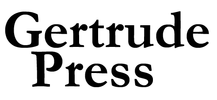’90s Earthquakes
|
Once I was at a party when the music changed, drawing me from a sunny festive patio to the loudspeakers indoors. I hadn’t listened to this particular album in fifteen years, but knew every one of its familiar forgotten chords. I am speaking of Tori Amos’s Little Earthquakes--the first music that seemed to address my own emotions in adolescence and that I played every night for over a year. One by one, people left the main party to crowd in the darker indoors. It was the moment I learned what the author Megan Milks spends a book detailing: “that practically every queer person I know of my generation has some kind of affinity for Tori Amos.”
The project belongs to Instar Books’ Remember the Internet, a series of hyper-focused shorts in the style of 33 1/3’s series of music books or Boss Fight’s histories of video games. The books use a mixture of journalism and memoir to document Internet subcultures. They are analogue solutions to corruptible, and rapidly vanishing, digital pasts. Season one includes Myspace Scene Queens, Tumblr Porn, Google Glass, and, of course, Tori Amos Bootleg Webring, which explores Milks’ coming of age beside the websites and message boards devoted to concert bootlegs. While some traditional music criticism is present, the book focuses more on Milks’ evolving relationship to different albums and their reception, by fan communities and the music world, through Amos’s changing career. Singer-songwriter and pianist Tori Amos had one of the nineties’ most active Internet fandoms. While many sites were little more than a publicity shot and an “I Love Tori” banner, there was also a lively interactive culture where fans communicated with each other and preserved the experience of live shows. Performances were notoriously unique. A three-minute recorded song might stretch to fifteen minutes “with an additional bridge and a new, incantatory section that’s largely improv and different every time,” meaning privately recorded cassettes were the only means for non-attendees to hear these one-off versions. Fans used a complicated honor-and-vouching system for trading bootlegs online.
Milks, a midsize trader, had about seventy recordings by the time they stopped participating. The story of their collecting is also the story of an anarchic early Internet, whose sites were clunky and independent, discovered—in this time before effective search engines—through mutually linking sites and handwritten URLs. The Internet became a haven for a |
teenage Milks, dysphoric and closeted, struggling to navigate queerness in central Virginia. The sober, funny, and tragic analysis of Milks’ youth creates an emotional foundation for the profiles of major traders and digital Tori lore. Their relationship with equally closeted Tori devotee and high-school classmate Chris encompasses many of the confusions and insecurities that make a balm of the anonymous Internet world:
“I’m angry with myself about the pasta I’ve just eaten, and for stubbing my toe on my bedroom door a few days ago. The toenail was scraped off clean and I was hysterical. My lavender prom shoes are open toed. ‘I’m going to be ugly for prom!’ I wailed as my mom tried not to laugh. When we fast-dance I concentrate on keeping my arms flexed to control the flab. It’s a lot. Poor Chris. Poor me.” Tori Amos, herself, is a secondary figure, hovering inaccessibly over the world she has wrought. Information about her is responsive: When Tori says, “I hate the word fans. I’d like to call you ears with feet,” followers start referring to themselves as EwFs (Ears with Feet) online. While some traditional music criticism is present, the book focuses more on Milks’ evolving relationship to different albums and their reception, by fan communities and the music world, through Amos’s changing career. All in all, Tori Amos Bootleg Webring is an intimate portrait of a hyper-specific and mostly defunct Internet community that does a wonderful job showing what it was like to live in that zone. Such records are necessary to capture the feeling of life when existence is split between physical and digital worlds. 
Calvin Gimpelevich is the author of Invasions and the recipient of awards from Lambda Literary, Artist Trust, Jack Straw Cultural Center, and 4Culture, in addition to residencies through CODEX/Writer’s Block and the Kimmel Harding Nelson Center for the Arts. His work has appeared or is forthcoming in Ploughshares, Electric Literature, them., and others. More at calvingimpelevich.com.
|
